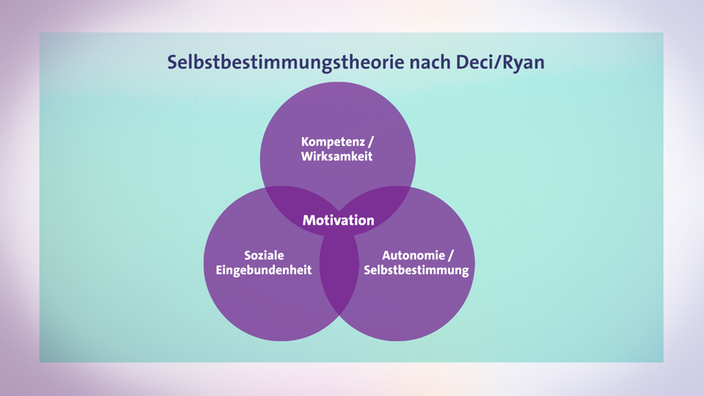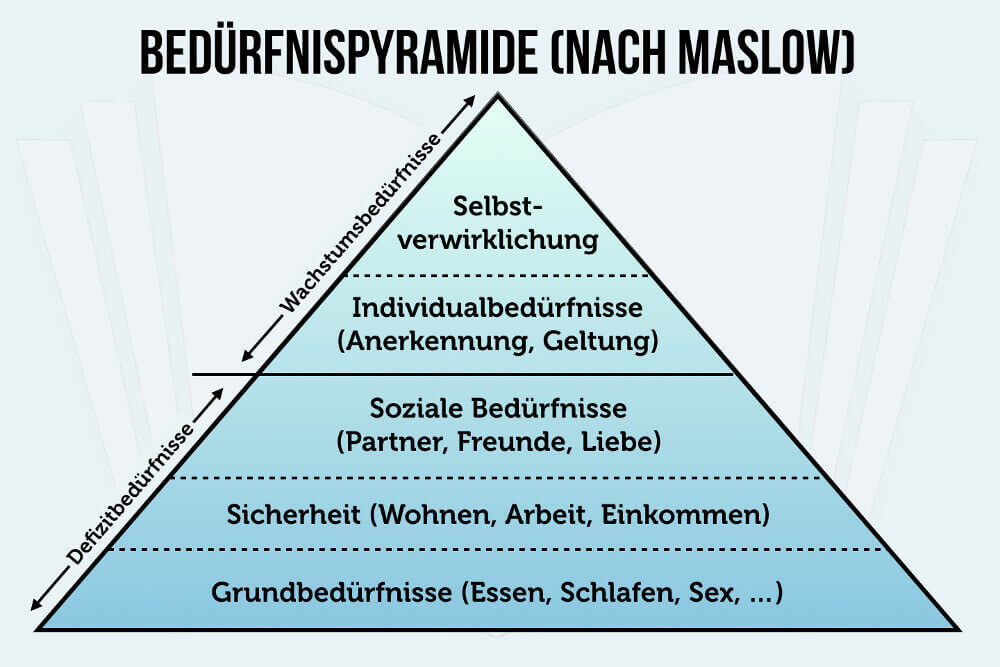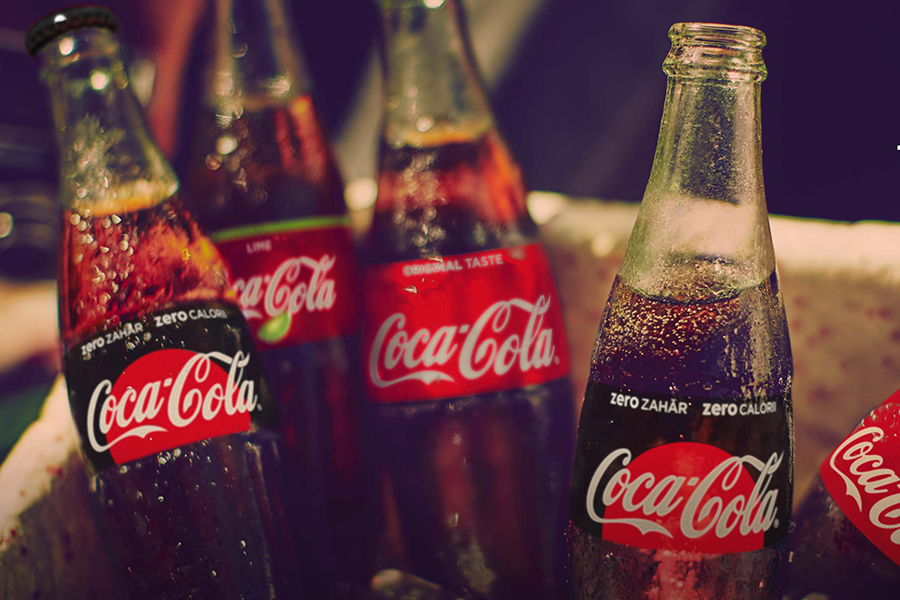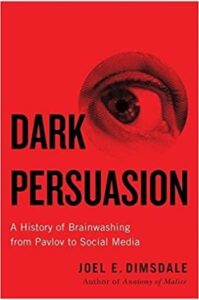Aber nur weil die modernen Webbrowser den Einsatz von Gamification auf Websites zusätzlich unterstützen, bedeutet das nicht, dass nun die Websites mit Spieleinhalte vollbepackt werden müssen. Gamification trennt sich vom effizienzgetriebenen Prozess, wo möglichst alles schneller vollzogen wird um ans Ziel zu kommen. Mit beispielsweisen kleinen Animationen auf einer Website beim Hochladen von Elementen oder beim Durchscrollen einer Seite, kann Gamification helfen, Spaß bei alltäglichen Tätigkeiten haben und Menschen mit keinen spielerischen Aktionen in spielefremden Umgebungen zu motivieren.
Die Magie der Motivation
1943 schrieb der Psychologe Abraham Maslow eine Abhandlung mit dem Titel “A Theory of Human Motivation”, in der er eine Hierarchie der menschlichen Bedürfnisse vorschlug. Diese ist heutzutage bekannt als die Bedürfnispyramide nach Malow’.
Jedes Spiel, was Menschen miteinander verbindet, ein Gefühl gibt, etwas zu leisten, weil Konstrukte erschaffen werden und sich die Spielenden so als Individuum selbst ausdrücken können, erfüllt die Bedürfnisse der dritten, vierten und fünften Ebene der Pyramide. Betrachtet man diese Ebenen näher, so wird interessant, wie die verschiedenen Ebenen in einander übergreifen.[1]
Edward Deci und Richard Ryan meinten aber, dass der Mensch neben den körperlichen Bedürfnissen auch geistige Bedürfnisse hat, was wiederum zu psychischen Leiden oder Erkrankungen führt, wenn diese nicht befriedigt werden.[2] Deci und Ryan haben viel zur Entwicklung der Selbstbestimmungstheorie beigetragen und erweitern das Modell um drei mentale Abschnitte:
1. Kompetenz: Das “in etwas gut fühlen”.
2. Autonomie: Freiheit, Dinge auf die eigene Art zu tun.
3. Verbundenheit: Die Verbindung zu anderen Menschen.

Intrinsische und Extrinsische Motivation
Motivation und Wissenserwerb sind eng miteinander verbunden. Die Lernenden müssen sich meistens intellektuell anstrengen, was einen großen Energieaufwand bedeutet, wenn beispielsweise gelernt werden muss, ohne es zu wollen. Kommt also der Lernauftrag von einer externen Quelle, nennt man diese Art von Energieaufwand „externe Motivation“. Kommt allerdings der Lernantrieb von der eigenen Neugier und Anreiz auf Erfolg, ordnet man diesen Energieaufwand der „intrinsischen Motivation“ zu.[3]
Für die Anwendung von Gamification auf Websites bedeutet das nun, dass Designer*innen den Nutzer*innen, egal ob extrinsisch oder intrinsisch motiviert, die Aufnahme von Inhalten wohldosiert liefern müssen. Im besten Fall vermitteln wir als Designer*innen den extrinsisch Motivierten Inhalte so leicht wie möglich, sodass bei sozusagen schwerer Kost die Aufnahme nicht zu schwer fällt.
Belohnungen
Ein wichtiges Beispiel für Gamification ist die Verwendung von Belohnungen. Bei Spielen werden Spieler*innen oft mit Punkten, Erfolgen oder anderen virtuellen Gegenständen belohnt, sobald sie Aufgaben erledigen oder Meilensteine erreichen. Diese Belohnung kann dazu beitragen, dass sich die Spielenen gut fühlen und weiterespielen wollen. Dieselbe Idee kann auch in anderen Kontext angewendet werden. Beispielsweise auf Websites, wo Nutzer*innen für die Erledigung von Aufgaben oder das Erreichen bestimmter Ziele belohnt werden. Eine Website könnte beispielsweise Punkte oder virtuelle Belohnungen für Nutzer*innen anbieten, welche Umfragen ausfüllen oder sich für Newsletter anmelden, was sie motivieren kann, sich weiterhin mit einer Website zu beschäftigen. Adidas hat sich genau diesem Prinzip angenommen, um seine User*innen belohnen, indem sie für jeden gelaufenen Kilometer Punkte gewinnen können. [4] Doch nicht nur Punkte für die User*innen, sondern auch mit gutem Zweck hat es Adidas mit der Kampagne “Run for the Oceans” geschafft, Nutzer*innen sprichwörtlich zu bewegen, wo mit jedem gelaufenem Kilometer 1 Dollar für einen guten Zweck gespendet wurde. [5] So kamen im Jahr 2018 1mio. Dollar zusammen.
Insgesamt kann Gamification ein wirksames Instrument sein, um Nutzer*innen in nicht spielerischen Kontexten zu motivieren und zu binden, indem es Belohnungen und positives Feedback bietet und Aufgaben oder Aktivitäten angenehmer und lohnender macht.
Sources:
[1] Schell, Jesse: The Art of Game Design. A Book of Lense, 2. Aufl. Pittsburgh, Pensylvania: CRC Press 2015, S. 149
[2] https://www.planet-wissen.de/gesellschaft/psychologie/glueck/motivation-selbstbestimmungstheorie-100~_v-gseapremiumxl.png (Zugriff am 12.12.2022)
[3] https://www.bauberufe.eu/images/doks/Motivation_staerken.pdf (Zugriff am 12.12.2022)
[4] https://strivecloud.io/blog/app-gamification/gamification-examples-adidas/(Zugriff am 12.12.2022)
[5] ebenda.





